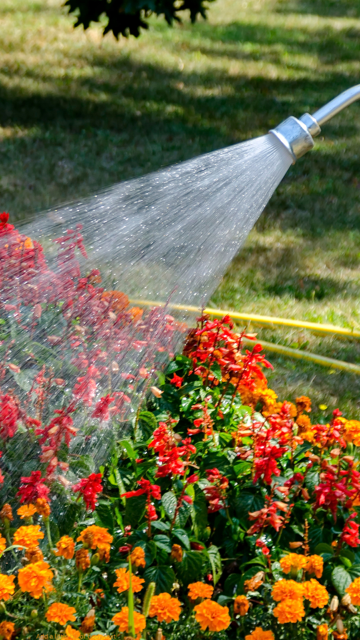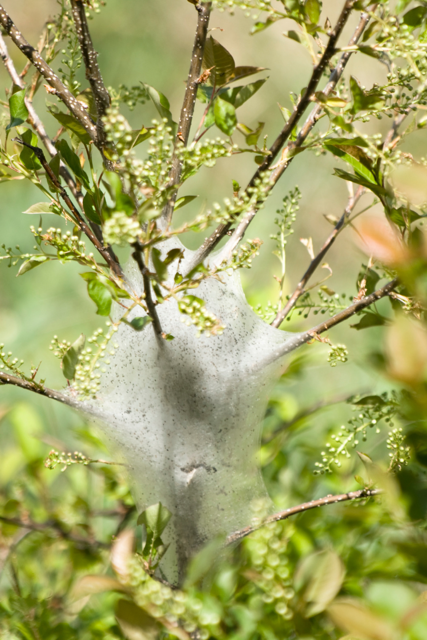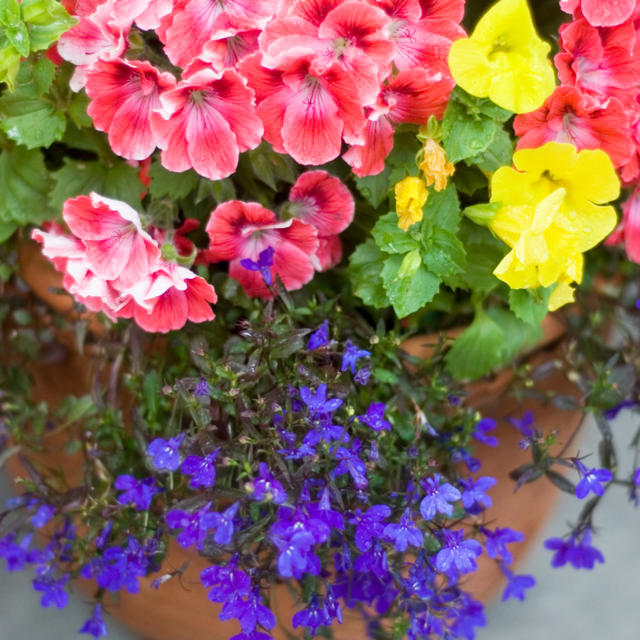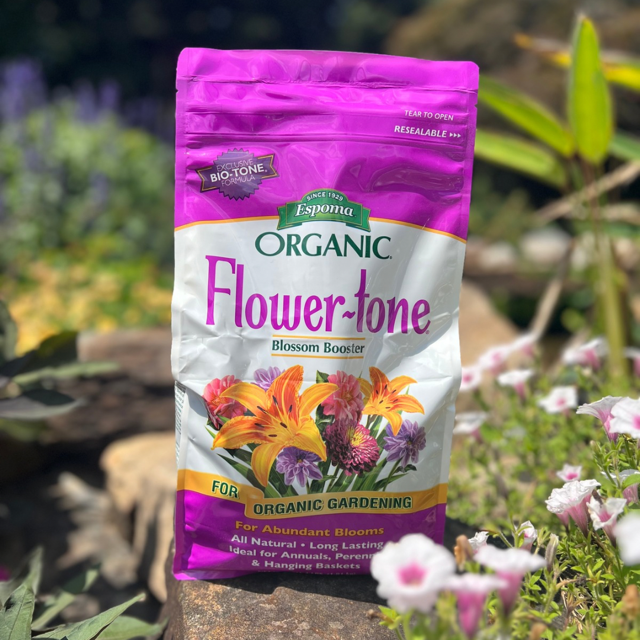The Fall school semester is about to begin, but our plants know we are still in the heat of Summer. Depending on our temperatures, heat and drought stress may continue to be present, so make sure to remain vigilant and water your plants deeply. Providing shade and adequate mulch helps keep roots cool and retains soil moisture. Two to three inches of mulch is ideal; just be sure to keep mulch away from the trunks of plants.
Check below the soil surface a few inches deep to see if your plants are suffering from too little water. Shallow watering may not penetrate deep enough for the roots to take up water. Knowing how moist the soil is at the root level is essential to gauge how much supplemental water your plants require.
So, how much water do your plants actually need? The answer is: It depends.
The most important thing you can do to protect your plants is to monitor them. Pay attention to how your plants are reacting. Are they wilting? Do their tips have scorching brown marks? Is the soil moist a few inches deep? During particularly hot and dry months, water deeply every three days. Use a gentle setting on your hose – the shower setting should work fine. Strong streams of water can contribute to soil compaction, which restricts the amount of water that will travel to the roots. Direct the water to the base of the plant, close to the root ball and around the drip line. There is no need to water the foliage.
Depending on your plant’s size, you will want to water enough so that the root ball has adequate moisture. Gardeners learn what each plant requires through trial and error, and frequently monitoring your plants helps you catch problems quickly.
If you have concerns about your plants’ needs, give us a ring or drop by and ask us for help.


As you monitor your plants, look for webs on the leaves of deciduous and evergreen plants. Webworms are appearing in our area, and the caterpillars will begin munching on your plants once the larvae hatch.
Destroy any webs you can reach with a stick. Be sure to throw the webs into a sealed plastic bag. We have products that will kill the larvae and the caterpillars, so be sure to check out our Plant Pharmacy and ask our plant professionals which products are best for you. Our county extension offices are great resources that offer free pest identification if you are having difficulty determining what pest you are dealing with.
Your Summer containers will continue to require water. Moisture meters are great tools for determining how much moisture is near the roots. Insert the meter into various areas of the container to see how much moisture is present. Ideally, you’d like your containers to be evenly moist.
Containers with succulents or drought-tolerant plants will tolerate dryer conditions. Feel free to trim back annuals that are leggy or underperforming. Espoma Flower Tone or any fertilizer with “Bloom Boost” on the label will help your annuals continue to flower.



Cool temperatures are in our future and now is the time to think about which cool-season vegetables you’d like to grow. If you are using seeds, remember that our average first day of frost is November 1.
Look at the number of days to germination and count backward – be sure to add some time for harvesting. Transplants may be planted in your vegetable gardens once you have cleaned up from your Summer harvest. We recommend adding a layer of compost or garden soil before planting to ensure your plants receive adequate nutrients. Espoma fertilizers are an excellent option for monthly feeding.

Our August Scottsdale Farms Garden Club will meet on Monday, August 12, at 10:00 a.m. We will discuss steps to take to prepare our Fall gardens, with an emphasis on planting for fall color. Please register online so that we may have adequate seating.
